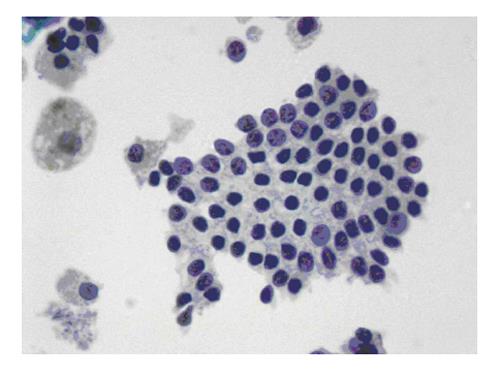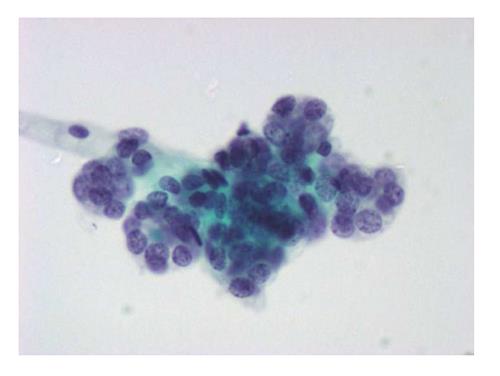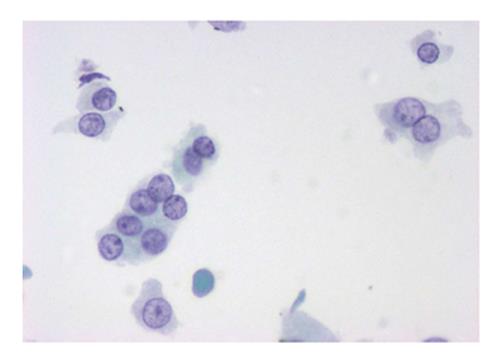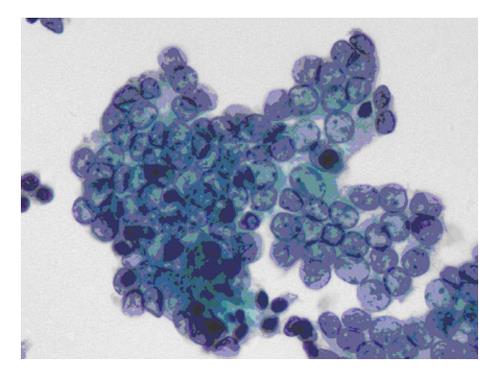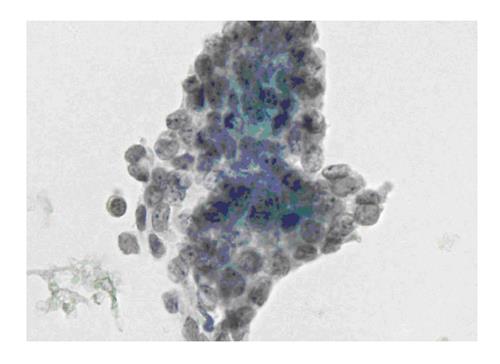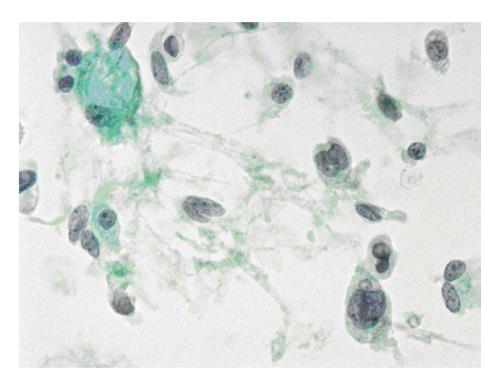Copyright
©The Author(s) 2016.
World J Clin Cases. Feb 16, 2016; 4(2): 38-48
Published online Feb 16, 2016. doi: 10.12998/wjcc.v4.i2.38
Published online Feb 16, 2016. doi: 10.12998/wjcc.v4.i2.38
Figure 1 Follicular cells arranged in a flat sheet, colloid and pigment-laden macrophages (× 40 pap stain on ThinPrep slide) (diagnostic categories II).
Figure 2 Crowded macrofollicles with mild irregularities in nuclear membrane and prominent nucleoli in a specimen with scant colloid (× 40 pap stain on ThinPrep slide) (diagnostic categories III).
Figure 3 A cellular specimen composed of Hürthle cells arranged in loosely cohesive sheets or isolated in a case diagnosed as Hürthle cell adenoma (× 40 pap stain on ThinPrep slide) (diagnostic categories IV).
Figure 4 Presence of cell group with nuclear crowding, increased nuclear-cytoplasmic ratio, irregularities in nuclear membrane and micro-nuclei (× 40 pap stain on ThinPrep slide) (diagnostic categories V).
Figure 5 Flat sheets showing enlarged, pale nuclei with finely granular chromatin of a papillary Ca case (× 40 pap stain on ThinPrep slide) (diagnostic categories VI).
Figure 6 Enlarged follicular cells arranged in monolayer sheets and follicular groups with nuclear elongation and chromatin clearing in a follicular variant of PTC case (× 40 pap stain on ThinPrep slide) (diagnostic categories VI).
Figure 7 Tumor cells with distinct granules with eccentric nuclei.
The nuclear chromatin appears as “salt and pepper type” in a medullary carcinoma case (× 40 pap stain on ThinPrep slide) (diagnostic categories VI).
- Citation: Misiakos EP, Margari N, Meristoudis C, Machairas N, Schizas D, Petropoulos K, Spathis A, Karakitsos P, Machairas A. Cytopathologic diagnosis of fine needle aspiration biopsies of thyroid nodules. World J Clin Cases 2016; 4(2): 38-48
- URL: https://www.wjgnet.com/2307-8960/full/v4/i2/38.htm
- DOI: https://dx.doi.org/10.12998/wjcc.v4.i2.38









